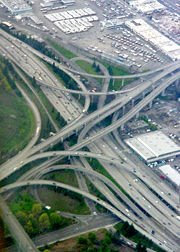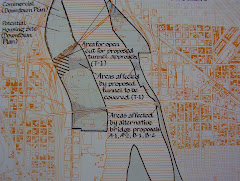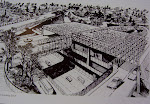The Mt. Hood Freeway (I-80N) Facts and History Page
The Mt. Hood Freeway was a polarizing project of the 1970's where inner city people took a stand against an expressway that would have benefited the outer suburbs and the City of Gresham while destroying their SE Portland neighborhoods
The Mt. Hood Freeway was a polarizing project of the 1970's where inner city people took a stand against an expressway that would have benefited the outer suburbs and the City of Gresham while destroying their SE Portland neighborhoods

The path of the freeway is shown below with the properties highlighted in yellow for acquisition and destruction. The freeway would have started at the east end of the Marquam bridge, coursed in a SE direction towards Division Street (following the railroad tracks on the north side). Then cut an 8-lane swath where SE Clinton Street is today. At 52nd Ave, the freeway would have made a 45 degree turn towards SE Powell. From here, it would follow an 8-lane path just to the south of Powell to a junction with I-205. A spur from this route would have connected to a replacement for the Ross Island bridge. Approximately 1500 homes and businesses would have been destroyed.

The Moses freeway plan was revised as part of the Portland Planning Division 1966 developmental plan. Red indicates existing freeways. Green indicates freeways never built













